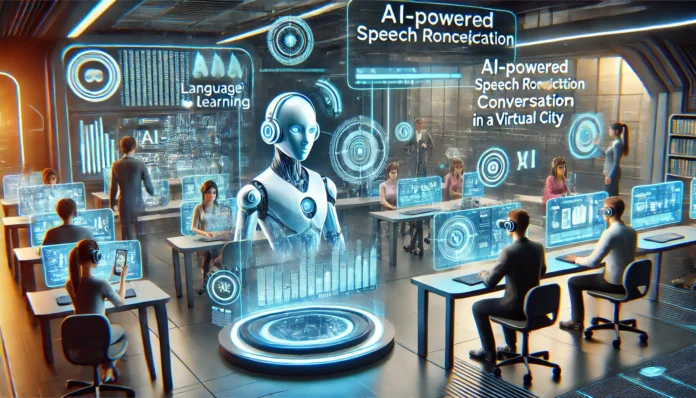Artificial Intelligence (AI) is transforming multiple industries, and language learning is no exception. With advancements in natural language processing (NLP), machine learning, and voice recognition, AI-driven language learning platforms are making it easier and more accessible for people worldwide to master new languages. Whether through chatbots, personalized learning paths, or real-time translations, AI is reshaping how we approach language acquisition.
AI-Powered Language Learning Platforms
AI has given rise to innovative language learning platforms like Duolingo, Rosetta Stone, Babbel, and Mondly, which utilize machine learning to provide adaptive lessons tailored to individual learners. These platforms analyze user progress and adjust difficulty levels accordingly, ensuring an efficient and engaging learning experience.
Personalized Learning with AI
Unlike traditional language learning methods, AI-based programs personalize lesson plans based on the learner’s strengths, weaknesses, and preferences. Adaptive learning algorithms identify areas where a user struggles and adjust future lessons to focus on those weak points. This dynamic approach helps learners progress faster compared to one-size-fits-all teaching methods.
Conversational AI and Chatbots
One of the biggest challenges in language learning is practicing real-life conversations. AI-powered chatbots like ChatGPT, Google Bard, and Duolingo’s AI tutor enable users to engage in realistic dialogues, helping them improve fluency and pronunciation. These bots can simulate real-world interactions, making it easier for learners to gain confidence in speaking without fear of judgment.
Speech Recognition and Pronunciation Improvement
AI-driven speech recognition tools, such as those found in Elsa Speak and Speechling, provide real-time feedback on pronunciation and intonation. These tools analyze the user’s speech patterns and compare them with native speakers, offering corrections and suggestions to enhance pronunciation accuracy.
Real-Time Translation and AI Assistance
With AI-powered tools like Google Translate, DeepL, and Microsoft Translator, real-time translation has become more accurate and context-aware. These tools help language learners understand texts, conversations, and even cultural nuances more effectively. AI can also be integrated into daily activities, allowing users to learn in a more immersive environment by translating signs, menus, or spoken language instantly.
AI and Gamification in Language Learning
Gamification plays a significant role in making language learning engaging. AI enhances gamification by incorporating:
- Adaptive challenges that adjust difficulty based on the learner’s skill level.
- Personalized rewards and streak tracking to keep users motivated.
- AI-generated quizzes and interactive exercises that make learning fun.
The Future of AI in Language Learning
With the rise of AI tutors and immersive virtual reality (VR) experiences, the future of language learning looks promising. AI-driven virtual tutors may soon replace traditional classroom settings, offering fully personalized lessons. Additionally, AI-powered VR environments will allow learners to practice languages in simulated real-world scenarios, enhancing immersion and retention.
Conclusion
AI is revolutionizing language learning by making it more accessible, personalized, and engaging than ever before. From smart chatbots and speech recognition to adaptive learning and real-time translation, AI is breaking language barriers worldwide. As technology advances, AI will continue to shape the future of multilingual communication, making it easier for people to connect across cultures.





